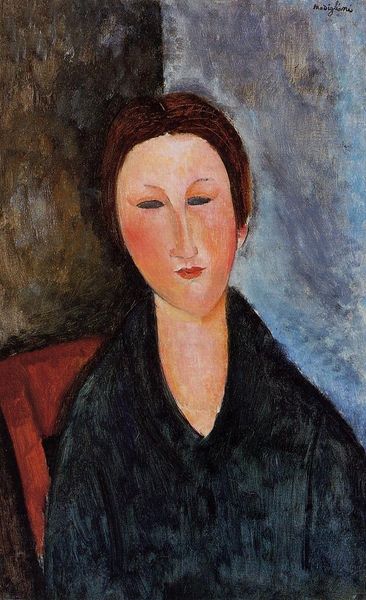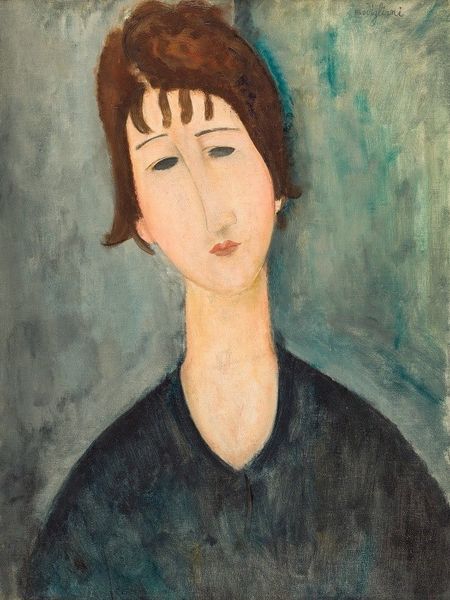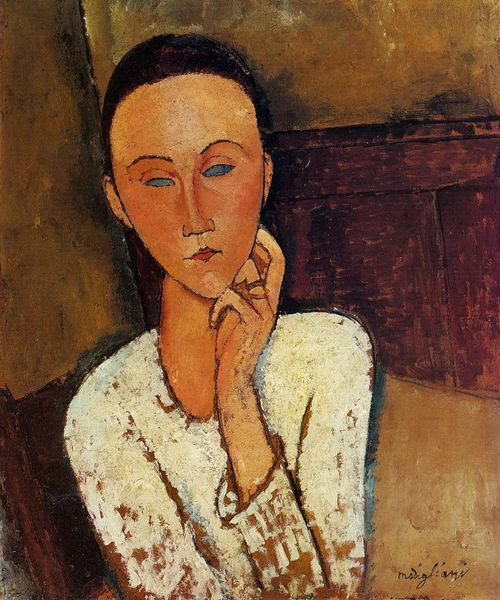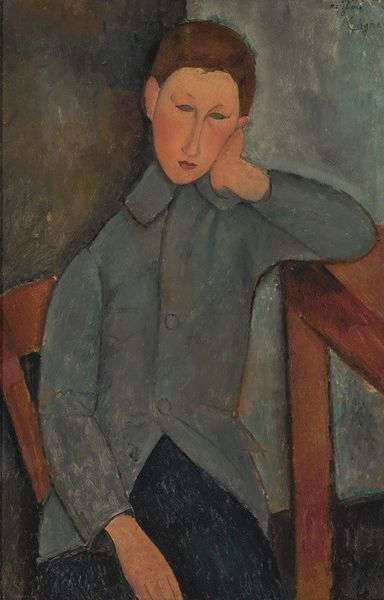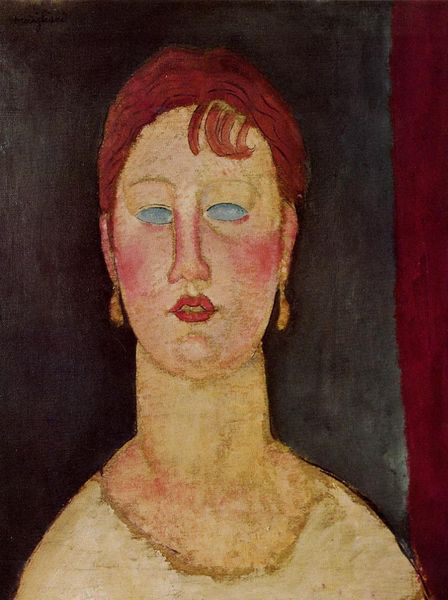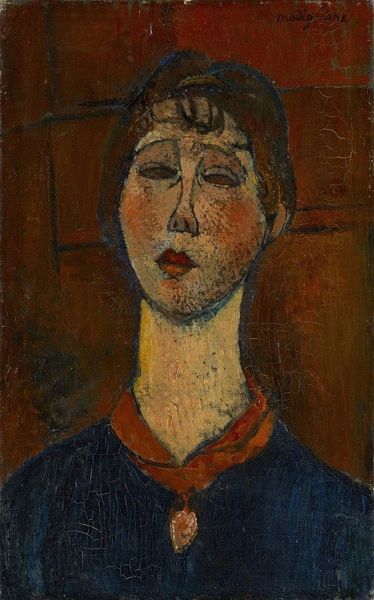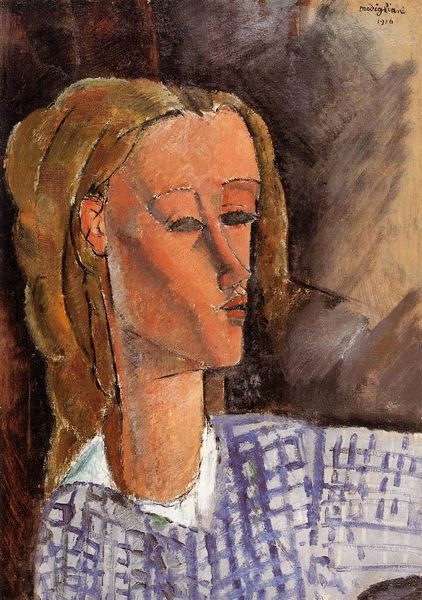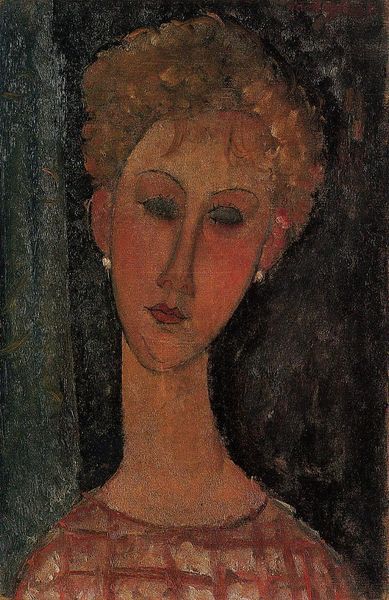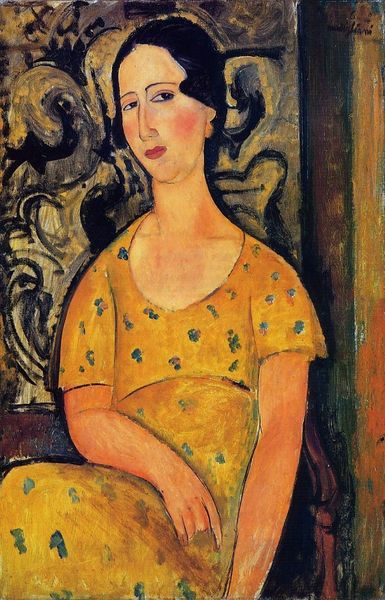
Dimensions: 44.5 x 29 cm
Copyright: Public domain
Curator: Well, this is "Portrait of Madame Survage" painted by Amedeo Modigliani in 1918, during a particularly tumultuous period near the end of World War I. It's oil on canvas and currently resides in a private collection. Editor: My first impression is of serene melancholy. The closed eyes, the gentle tilt of her head… there's a sense of inward contemplation. It’s almost dreamlike, isn’t it? Curator: It's characteristic of Modigliani's portraits from this period. He was working within a specific cultural milieu in Paris, one marked by artistic experimentation, poverty, and personal tragedy. He often depicted his sitters with elongated features and a distinctive sense of elegant sadness. Editor: Those closed eyes are particularly striking. Eyes are often considered the windows to the soul, but here, they are veiled. It compels the viewer to look for other symbolic indicators of her personality. What do you make of the blue tones? Curator: The blues are interesting. Blue can suggest both tranquility and melancholy, aligning perfectly with your initial impression. Modigliani wasn’t necessarily aiming for accurate representation. It's important to understand that the portraits he created also were commercial endeavors, supported and exhibited through his relationship with his patron Paul Guillaume. Editor: Perhaps it's meant to tap into the collective unconscious of that era – the deep weariness felt during and after the war. But then you have her slight smile; it suggests an enduring sense of inner strength and her personal experience during such a devastating world war. Curator: Absolutely, these paintings reflect a societal moment and a market imperative at the same time. The "primitive" quality evokes a pre-industrial ideal even if the life of his sitters revolved entirely around modern experience. It all plays a role in crafting meaning and, of course, driving sales and notoriety. Editor: Right, it does draw us into how collective consciousness plays out in art of the time. Looking closely, though, I appreciate how such stylization reveals how human expression is still very possible with minimal, deliberate brushstrokes. Her emotional landscape becomes universal. Curator: Indeed. Considering all that, and how his art circulated, “Portrait of Madame Survage” speaks to a rich intersection of personal experience, artistic style, and market demand. Editor: And perhaps this invites each of us to remember those periods where silence spoke louder, feelings were more vibrant, and our ability to overcome devastation revealed strength within our personal cultural memory.
Comments
No comments
Be the first to comment and join the conversation on the ultimate creative platform.
